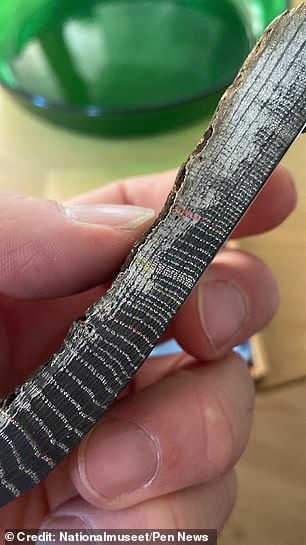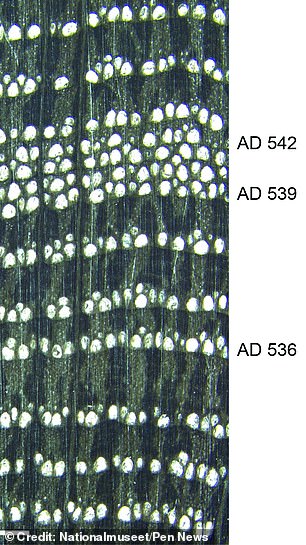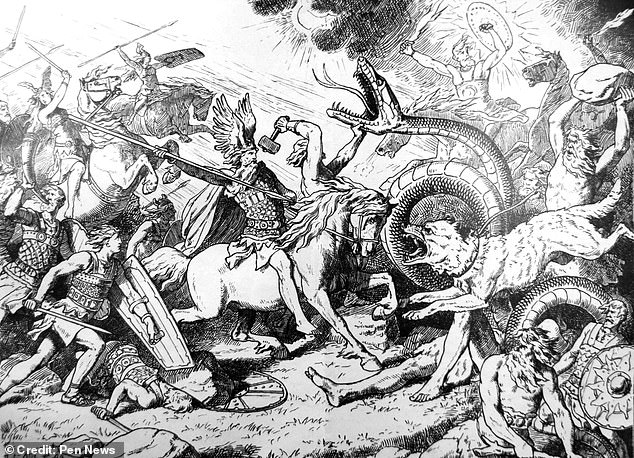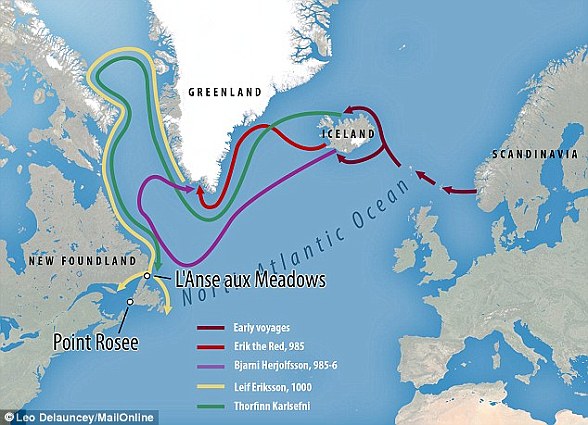Climate disaster plunged Scandinavia into years of darkness and killed HALF of Norway and Sweden 1,500 years ago, study shows
A real-life Ragnarok plunged Scandinavia into years of darkness and killed up to half the people in Norway and Sweden, new research shows.
According to Viking belief, Ragnarok is the end of the world, when the Norse gods die battling demons and giants in an apocalyptic final clash.
And the agony of Ragnarok begins with the Fimbulvetr – a three-year winter that ends almost all human life.
Now new research has shown that the Scandinavian world really did experience such a long winter, and its impact on human life was devastating.
By analyzing tree rings, scientists from the National Museum of Denmark have proven that a real climate catastrophe occurred 1,500 years ago.
Morten Fischer Mortensen, a senior researcher at the museum, said this was the result of volcanic eruptions that enveloped the world in a pall of ash and sulfur.
He said: ‘I imagine it would have been terrifying – the volcanic eruptions happen so far away from Europe that no one would have known what caused them.
‘Then you realize – perhaps overnight – that the sun is hidden behind a veil, and that it is not warm and yellow, but cold and bluish.
A real Ragnarok plunged Scandinavia into years of darkness and killed up to half the people in Norway and Sweden, new research reveals (artist impression)

By analyzing tree rings, scientists from the National Museum of Denmark have proven that a real climate catastrophe occurred 1,500 years ago
‘Even in the middle of the day there were no shadows, and for more than a year there were no stars in the sky.’
To complete their research, scientists analyzed 650 pieces of oak wood from the period between 300 and 800 AD.
They found that growth rings became dramatically smaller starting in 536 AD, and even more so between 539 and 541 AD.
Mortensen described the impact on civilization.
He continues: ‘Based on our research into the annual rings we can see that there were really poor growing conditions for many years, which must also have been the case for the farmers’ crops.
‘We are in a period in which everyone lives on and off the land and is 100% self-sufficient.
‘So if the harvest fails several years in a row, that is really crucial.’
For many it was insurmountable.


Morten Fischer Mortensen, a senior researcher at the museum, said the event was the result of volcanic eruptions that enveloped the world in a pall of ash and sulfur.

Photo shows a depiction of the final battle of the gods during Ragnarok by Johannes Gehrts
Mortensen said: ‘Landscape reconstructions based on pollen analyzes show that some areas were abandoned and that forests were scattered across the abandoned fields.
‘Power structures have changed and in Denmark we have many large gold deposits that have been interpreted as offerings to the gods to bring back the sun.
“Many settlements ceased to exist, and it is easy to imagine that hunger, famine and disease claimed the lives of much of the population.”
He added: ‘In Norway and Sweden, researchers think up to half the population died, and it is not inconceivable that the same happened in Denmark.
‘I almost get chills when I see these small, narrow growth rings, because I know how much sadness, death and misfortune they represent.’
Furthermore, the similarity to the Fimbulvetr of Ragnarok legend cannot be a coincidence.
Mortensen: ‘It is remarkable that the oak trees have virtually no summer growth for three summers in a row.
‘The myth of Ragnarok begins with a winter of three years, with no summer in between.
‘Of course we cannot prove a direct link between the climate event and the myth, but there is a strong correlation.
‘It is therefore conceivable that elements of what people have experienced have found their way into the myths and are therefore an echo of previous experiences.’
It has not been determined which volcanoes caused the long winter.
But candidates have been proposed in Papua New Guinea, El Salvador, Indonesia, Iceland and North America.
In any case, the disaster was not limited to the Scandinavian world; climate models show a global temperature drop of several degrees.
Written sources from as far apart as the Roman Empire and China testify to the change in climate.
It is even suggested that the drop in temperatures increased the fertility of crops in the Arabian Peninsula, increasing food supplies and contributing to the Islamic conquests.
For the Danes, however, winter has left another – less dramatic – legacy.
Mortensen explains: ‘Danes have a great love for rye bread.
‘Rye is a grain that arrives in the country very late and only becomes common in the centuries after the climate crisis.
‘At the same time, rye can survive with the fewest hours of sunshine and can grow in relatively poor soil.
‘Therefore, it is likely that rye is a crop we adopt as a hedge against bad times; a crop that has the best chance of yielding returns in the bad years.’
Mortensen and his colleagues published their research in the Journal of Archaeological Science: Reports.

